Calendula vs. Marigolds – The Differences
It’s a common point of confusion for many people – What’s the difference between calendula and marigolds? They’re basically the same thing, right? Can’t I just substitute one for the other?
Calendula and marigolds are two very different plants with different actions, and trying to substitute one for the other isn’t advised. We personally blame all the confusion on whoever it was that first thought a good alternate name for calendula would be ‘pot marigold’!
At A Glance
Here’s a quick and handy chart, for the people who just want the conclusion and not to have to read through all this nonsense:

Now, let’s expand!
Names
First difference: Completely different scientific names!
Calendula
There are quite a few kinds of calendula flowers! Calendula is actually a genus of plants inside the plant family Asteraceae, meaning all the plants that count as calendula have it in their scientific name.
Calendula officinalis is that widely-cultivated bright bloom that’s so often coveted, both historically and in the present, for its medicinal properties. If you’re following a salve recipe or something else that calls for “calendula”, you should use Calendula officinalis.
Scientific name is NOT the variety name- when looking for calendula for your projects or garden, check tags, labels, and packets for both. Resina Calendula, Orange King Calendula, and Snow Princess Calendula are all very different looking blooms, but all of them are still Calendula officinalis, and can be used in the same way.
Other plants also bear Calendula in the first part of their name, but they aren’t so widely known, and are not used in the same way as Calendula officinalis. They appear to mostly be wildflowers, and not commonly cultivated ones at that.
Marigolds
Marigolds, on the other hand, are all under the genus Tagetes. African (or Aztec) marigolds are Tagetes erecta. French marigolds are Tagetes patula, while Mexican marigolds are called Tagetes lucida. There are also Signet marigolds, or Tagetes tenuifolia.
The most commonly grown marigolds are Tagetes patula and Tagetes erecta (French and African marigolds). Both have a good selection of varieties to choose from, bred over the years.
(Note an exception: Tagetes lucida, or Mexican Tarragon, is distinctly different from other marigolds in uses and properties. More on this in a future article. )
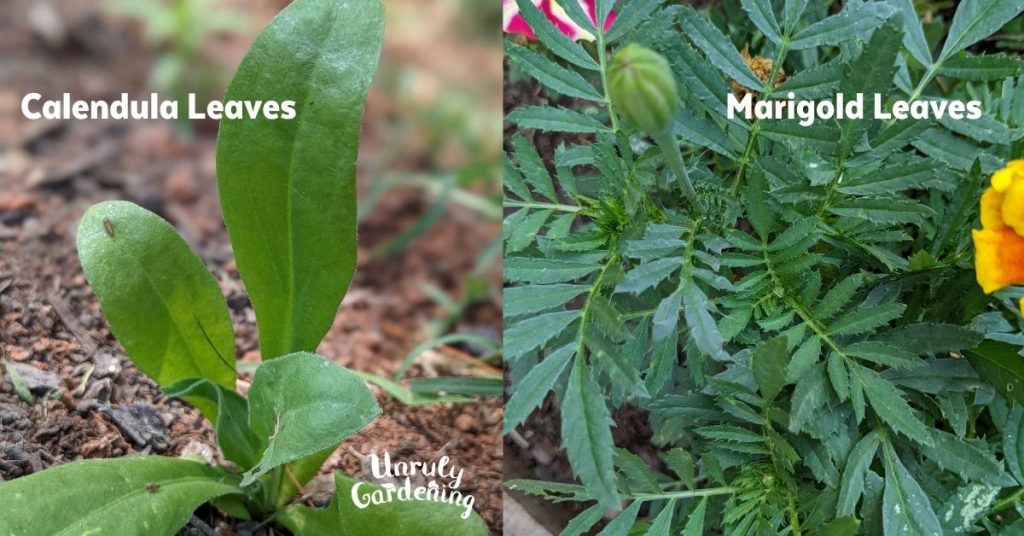
Physical Traits
Calendula
Calendula flowers may range in petal color and layering, but all Calendula officinalis should have the same leaf, body, stem, and seed set-up.
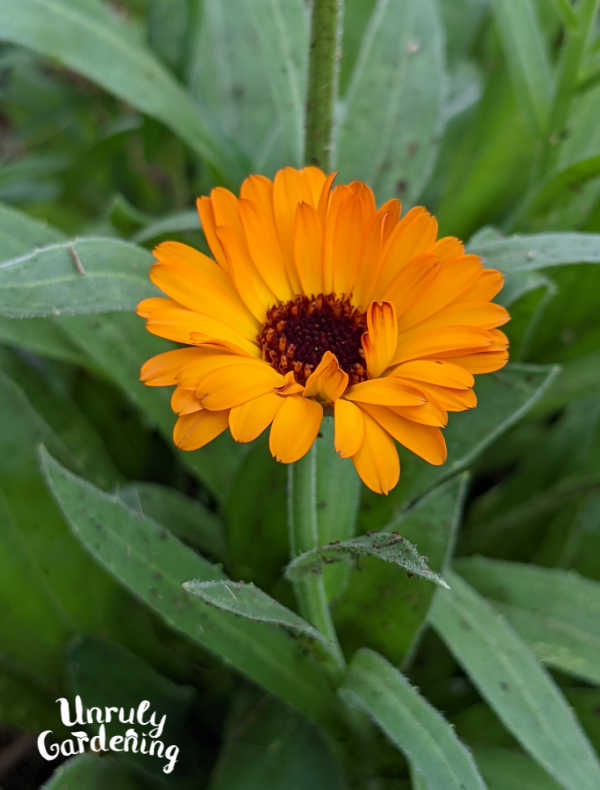
Calendula plants in general tend to be sticky to the touch- that’s the resin inside the plant, and when it comes to herbalists, this is highly desired. In fact, the stickier it is, the better, when it comes to making your salves and infused oils and other such things. Varieties such as Resina Calendula have been specifically bred for higher resin levels!
When the long, rounded leaves are stroked, one’s fingers generally tend to catch on the sticky, somewhat hairy texture. Stems are sticky too! The plant forms into a small shrub as long as one keeps up with the regular harvesting of flowers.
Calendula seeds are curved like a crescent, brown in color, and have little ridges or teeth all along their backs.
Marigolds

Long, thin leaves are toothed on the edges, and stems are smooth to the touch. In fact, the whole plant feels smooth.
Marigolds can be short and compact or grow up to over two feet tall, depending on variety. Petals are usually densely packed.
Marigold seedheads are packed full of straight black seeds, tipped with white.

Uses
Calendula
Calendula flowers are harvested for use in medicinal products, as a dye, and for their edible petals.
The flowers are often used via infused oils in salves, lip balms, soaps, and other related body-care products. The petals are sprinkled on salads as an edible way to add color. (Avoid eating the petals or drinking calendula tea if pregnant.)
The bright flowers also yield beautiful natural dyes when boiled and used on fabrics and yarns!
Many pollinators seem to enjoy calendula, bees and butterflies alike, while being left largely alone by most pests (at least around these parts). Some people recommend planting it among tomatoes, claiming it deters tomato hornworms.
Calendula can be constantly harvested, as it responds to having its flowers plucked by sending out even more flowers. In fact, one should be careful not to go too long without picking, or you might go out to look for blooms but only find seedheads!
Marigolds
A primary use for marigolds is to deter harmful nematodes in the garden, and for looks. It’s also said to deter other pests, but it seems no one can really agree on just which ones they turn away. Snails are said to dislike them, as well.
Some gardeners make a natural insect-repelling spray out of marigold flowers.
Interestingly enough, we’ve personally found that when Kilimanjaro White Marigolds (Tagetes erecta) are planted in our gardens, the pollinators go wild for them. Bees and butterflies flock to the flowers, but not a single pest takes a bite.
Marigolds are also used for natural dying, and can be used fresh or dried in this process.
Marigolds (Tagetes spp) aren’t used to replace calendula in a recipe and they aren’t typically used in body care products either. However, some cultures do use Tagetes spp. in their herbalism practices and in skin care. This article is referencing the common confusion when someone wants to make calendula soap, or salve, or tea and wonder if they can use marigolds (Tagetes spp) in its place.
Marigolds (Tagetes spp) shouldn’t be used to replace Calendula (Calendula officinalis) in calendula herbal remedies. (Though they have their place in other uses.)
(As mentioned above: Tagetes lucida, or Mexican Tarragon, is distinctly different from other marigolds in uses and properties. More on this in a future article. )

Conclusion
Calendula and marigolds are not the same plant and do not have the same specific properties. If you’re making calendula salve or another calendula product, make sure you’re using Calendula officinalis, and not a Tagetes species.
If you’re using a recipe that specifically calls for Tagetes species, then use marigolds (Tagetes spp.) instead of calendula.
One calendula may easily take the place of another in the same genus, and one Tagetes marigold for another, but Tagetes marigolds and calendula don’t have enough in common to be able to take the other’s place.

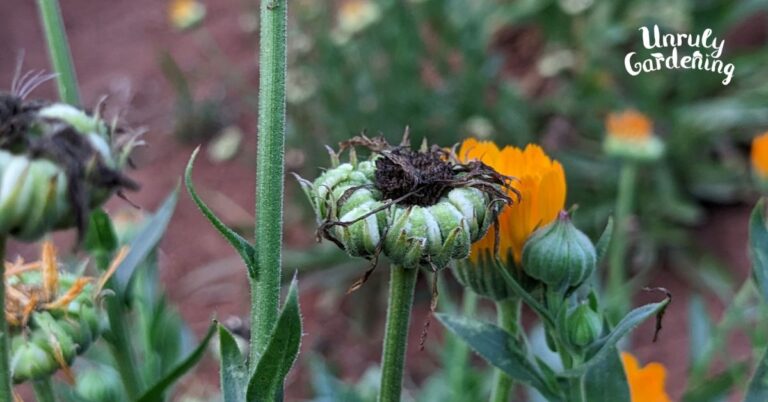
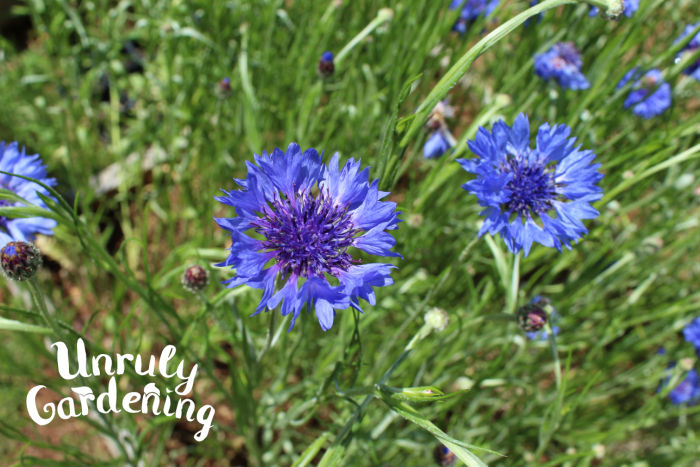
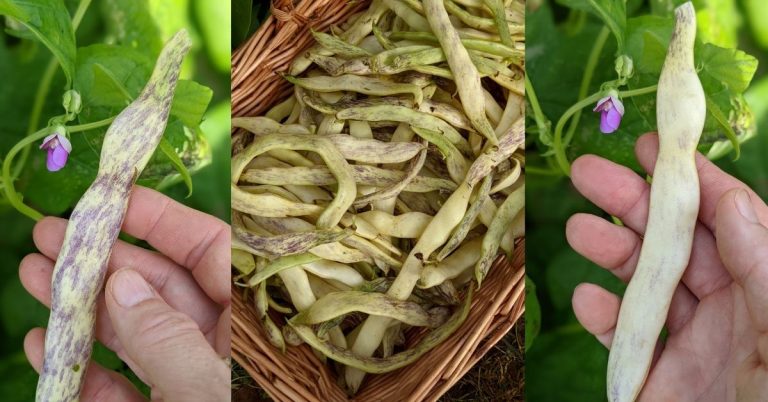
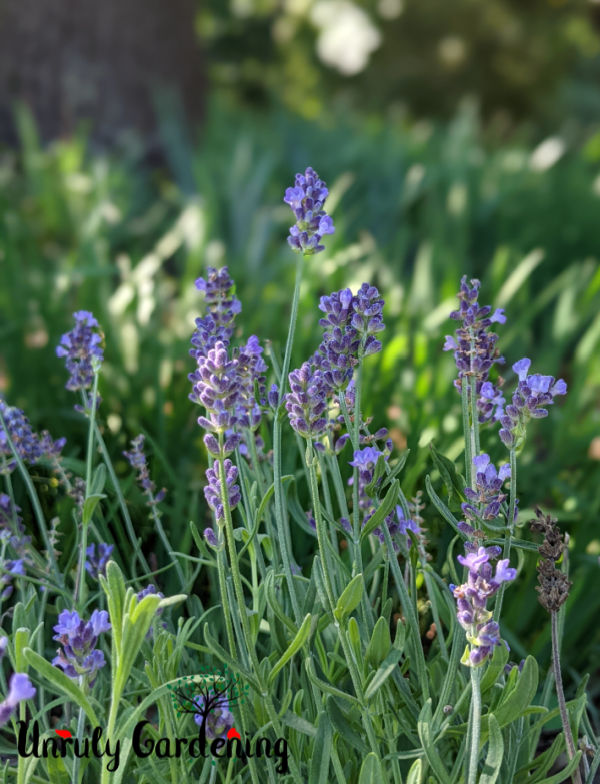

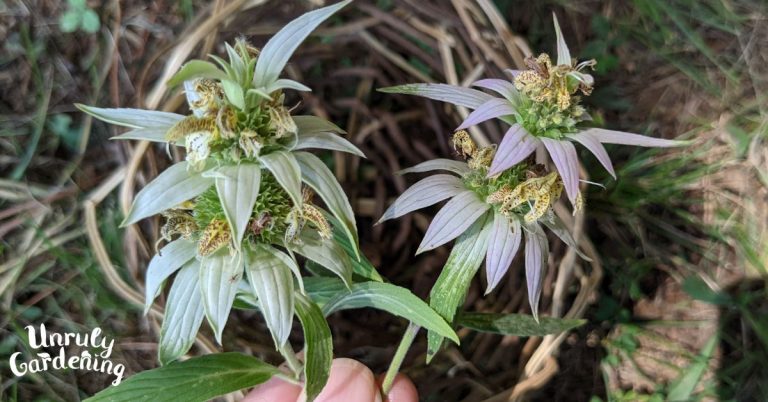
THANK YOU! The Nerdy Farm Wife turned me on to this chart and it is exactly what I was looking for and couldn’t quite find. Calendula vs Marigold…harder to get clear info than you might think, this is a great resource and I appreciate it.
Glad you found it useful! 🙂
Thank you so very much for clarifying this! After reading other info, I was almost ready to start using regular marigolds for making salve and oils, bit something just didn’t sit right with me. I appreciate you!
So glad you found it useful! 🙂
As I was looking through the info online there was Marigold tea which touted all these amazing properties and making tea and I was confused. Thanks for your chart. I have added calendula petal to sesame oil, but not heated it. Should I put into sun in dark bottle to warm? I use for body care all over before bath or shower. I would like to know how you keep the beneficial properties: Cream? Oi?l and process? Thank you
Kirsten
Hi Kirsten, I’m so glad the chart was helpful! You can infuse your calendula oil a few ways:
You can put it in a sunny window for about 2 weeks – after that you may want to tuck it away into a dark place. (Some sun infusion is nice, but too long can fade the flowers.)
Or I also have methods to heat a quick way and slow way written up in my article at our Nerdy Farm Wife site that you might find helpful:
https://thenerdyfarmwife.com/calendula-oil-salve/
The benefits of calendula will be in the oil, and also in salves, lip balms, lotion bars, creams, and other products made with the oil. It’s pretty durable, so can be heated and still have plenty of benefits.
Calendula O. has abortive qualities for rodents. When I grow it around my trees- as it CAN cause problems with your non woody plants- I don’t have problems with rabbits, mice, voles or other such nuisance pests.
Hi Craig, Thanks for sharing your experiences! We’ll have to try that out this spring around our apple trees since the voles tend to hang out in that area most.
what are the biomass and length of both plants ?
Hi Zul, Thanks for your comment! That information is outside of our knowledge base.
Perhaps a search on PubMed might be a helpful starting place?
https://pubmed.ncbi.nlm.nih.gov/?term=biomass+marigold
Thank you very much, it’s very clear and pleasure to read.
As for marigold I see everywhere on the internet that they are widely used not only for dyeing, but also for culinary as a saffron substitute. They are even called marigold saffron. And I know that in Georgian cuisine( south of Russia) it’s one of the ingredients of their authentic spices blend.
Please share your thoughts about this! Thanks 🙏
Hi Svetlana, Thanks for the information – that’s interesting to know! 🙂
Thank you very much. I also became tagetse to recognize marigolds because I needed to drink marigolds to see my eyes, but I did not know which flower it was. Should I use calendula flowers? Thank you
Hi Azam! Calendula (Calendula officinalis) tea is sometimes used externally as an eye wash:
https://thenerdyfarmwife.com/calendula-a-natural-remedy-for-irritated-eyes/
You’re article was very helpful thank you .
Thanks for the feedback Trudie – I’m so glad you found it helpful!
I usually just put a few marigold flowers mix with calendula flowers in a oil infusion for colour and smell. I have never had a problem. Being I live in the bush it will help Deter bugs. What do you think? Thanks for the info. Marcy
Hi Marcy, That sounds great & if it works well for you, I would keep doing it!
Marigolds (Tagetes spp) are used in many ways, this article is just to help with a point of confusion when people are trying to make “calendula infused oil” for a specific purpose such as salve or tea & think marigolds (Tagetes spp) will have the same herbal action. 🙂
I was just reading that marigolds (tagetes) is used to help eyesight and bursitis and is in supplements that benefit the eyes. They definitely were not referring to calendula since it listed the scientific name and had pictures of marigolds.
Are you saying that marigolds (tagetes) cannot be used in teas and salves?
Hi Diana, That’s so interesting! It’s wonderful how many uses plants have to offer us!
This article is referencing the common confusion when someone wants to make calendula soap, or salve, or tea and wonder if they can use marigolds (Tagetes spp) in its place.
It’s been a frequent point of confusion for my herbal readers for many years, so I asked my daughter to write this article for me.
It’s not saying to never use marigolds (Tagetes spp), it’s just helping clarify that when a recipe specifically calls for calendula or “pot marigold”, it’s usually referring to calendula officinalis. 🙂